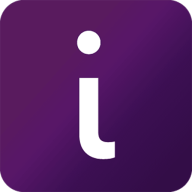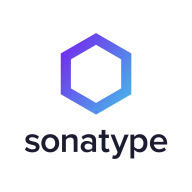

Acunetix and Sonatype Lifecycle are both prominent in software security and lifecycle management. Acunetix holds an edge in pricing and customer support, while Sonatype Lifecycle surpasses in feature offerings and perceived value.
Features: Acunetix is noted for its comprehensive threat detection, a wide range of integrations, and strong support for security tools. Sonatype Lifecycle excels in detailed component risk analysis, automated policy enforcement, and extensive features for managing open-source components.
Room for Improvement: Acunetix users suggest enhancing report customization, improving scan speed, and operational efficiency. Sonatype Lifecycle requires better UI responsiveness during complex tasks, improvements in performance under load, and more intuitive interfaces.
Ease of Deployment and Customer Service: Acunetix offers straightforward deployment and responsive customer service. Sonatype Lifecycle demands more initial setup efforts but provides versatile configurations suitable for complex environments, supported by robust service options.
Pricing and ROI: Acunetix is budget-friendly, offering a quicker ROI, appealing to smaller organizations. Sonatype Lifecycle, although more expensive, provides long-term value with advanced features, beneficial for enterprises focused on comprehensive security capabilities.
It saves a significant amount of time by covering attack surfaces.
We have seen cost savings and efficiency improvements as we now know what happens in what was previously a black box.
The technical support from Invicti is very good and fast.
The technical support from Acunetix is quite good
They are helpful when we raise any tickets.
JFrog is easier to configure for high availability as it does not require extra components.
Sonatype Lifecycle is very stable, especially in the binary repository management use case for managing binary artifacts.
Acunetix should have better integration with newer tools such as GitHub and Azure DevOps.
The support program was helpful in addressing it.
We also noticed a lack of detailed information for configuring Sonatype Lifecycle for high availability and data recovery.
The pricing of Acunetix is pretty expensive and could be improved.
We secured a special licensing model for penetration testing companies, which is cost-effective.
For larger numbers like our case with 1,000 user licenses, JFrog becomes much more cost-effective, roughly ten times cheaper than Sonatype.
Acunetix integrates with every type of tool, including CI/CD tools, offering 100% integration in DevOps environments.
Its most valuable role is in enhancing security by identifying potential vulnerabilities efficiently.
I find it to be one of the most comprehensive tools, with support for manual intervention.
The integration into our CICD pipeline enables us to continuously monitor code changes and identify new vulnerabilities.
The most valuable feature for us is Sonatype Lifecycle's capability in identifying vulnerabilities.


Acunetix Web Vulnerability Scanner is an automated web application security testing tool that audits your web applications by checking for vulnerabilities like SQL Injection, Cross site scripting, and other exploitable vulnerabilities.
Sonatype Lifecycle is an open-source security and dependency management software that uses only one tool to automatically find open-source vulnerabilities at every stage of the System Development Life Cycle (SDLC). Users can now minimize security vulnerabilities, permitting organizations to enhance development workflow. Sonatype Lifecycle gives the user complete control over their software supply chain, allowing them to regain wasted time fighting risks in the SDLC. In addition, this software unifies the ability to define rules, actions, and policies that work best for your organizations and teams.
Sonatype Lifecycle allows users to help their teams discover threats before an attack has the chance to take place by examining a database of known vulnerabilities. With continuous monitoring at every stage of the development life cycle, Sonatype Lifecycle enables teams to build secure software. The solution allows users to utilize a complete automated solution within their existing workflows. Once a potential threat is identified, the solution’s policies will automatically rectify it.
Benefits of Open-source Security Monitoring
As cybersecurity attacks are on the rise, organizations are at constant risk for data breaches. Managing your software supply chain gets trickier as your organization grows, leaving many vulnerabilities exposed. With easily accessible source code that can be modified and shared freely, open-source monitoring gives users complete transparency. A community of professionals can inspect open-source code to ensure fewer bugs, and any open-source dependency vulnerability will be detected and fixed rapidly. Users can use open-source security monitoring to avoid attacks through automatic detection of potential threats and rectification immediately and automatically.
Reviews from Real Users
Sonatype Lifecycle software receives high praise from users for many reasons. Among them are the abilities to identify and rectify vulnerabilities at every stage of the SDLC, help with open-source governance, and minimize risk.
Michael E., senior enterprise architect at MIB Group, says "Some of the more profound features include the REST APIs. We tend to make use of those a lot. They also have a plugin for our CI/CD.”
R.S., senior architect at a insurance company, notes “Specifically features that have been good include:
• the email notifications
• the API, which has been good to work with for reporting, because we have some downstream reporting requirements
• that it's been really user-friendly to work with.”
"Its engine itself is most valuable in terms of the way it calculates and decides whether a security vulnerability exists or not. That's the most important thing. Its security is also pretty good, and its listing about the severities is also good," says Subham S., engineering tools and platform manager at BT - British Telecom.
We monitor all Application Security Tools reviews to prevent fraudulent reviews and keep review quality high. We do not post reviews by company employees or direct competitors. We validate each review for authenticity via cross-reference with LinkedIn, and personal follow-up with the reviewer when necessary.